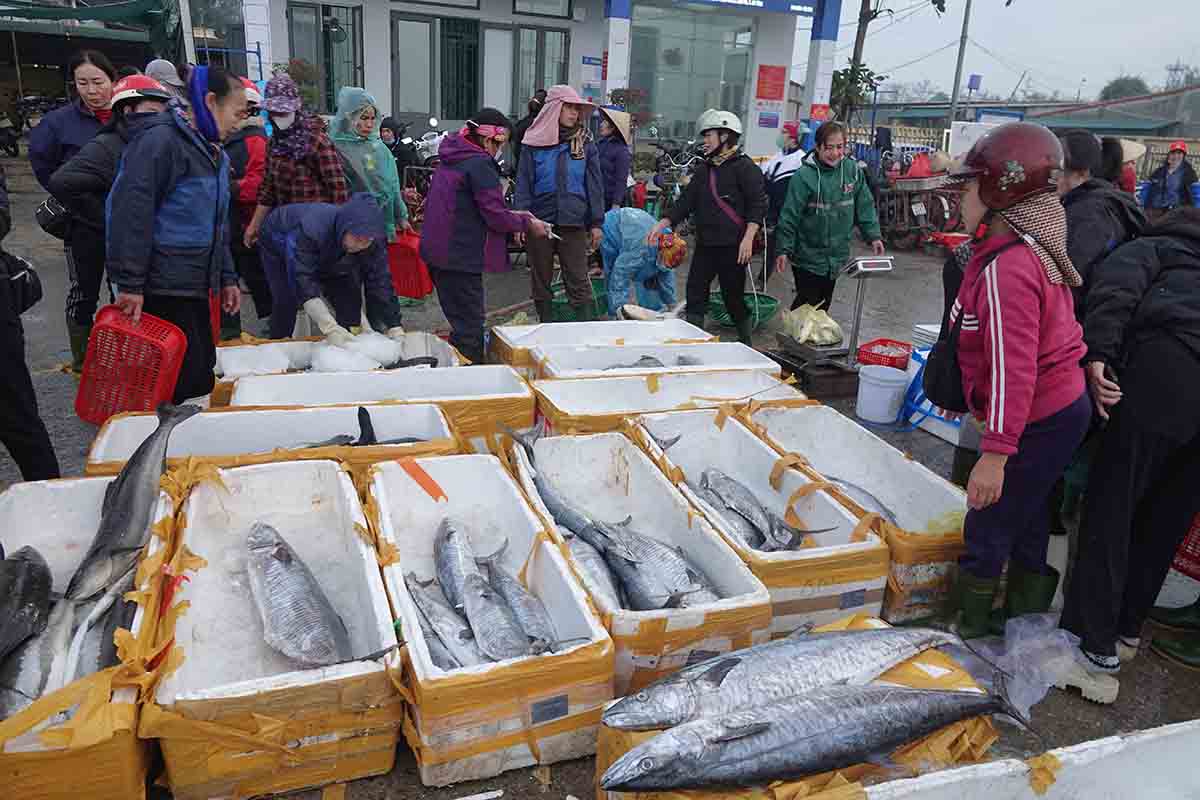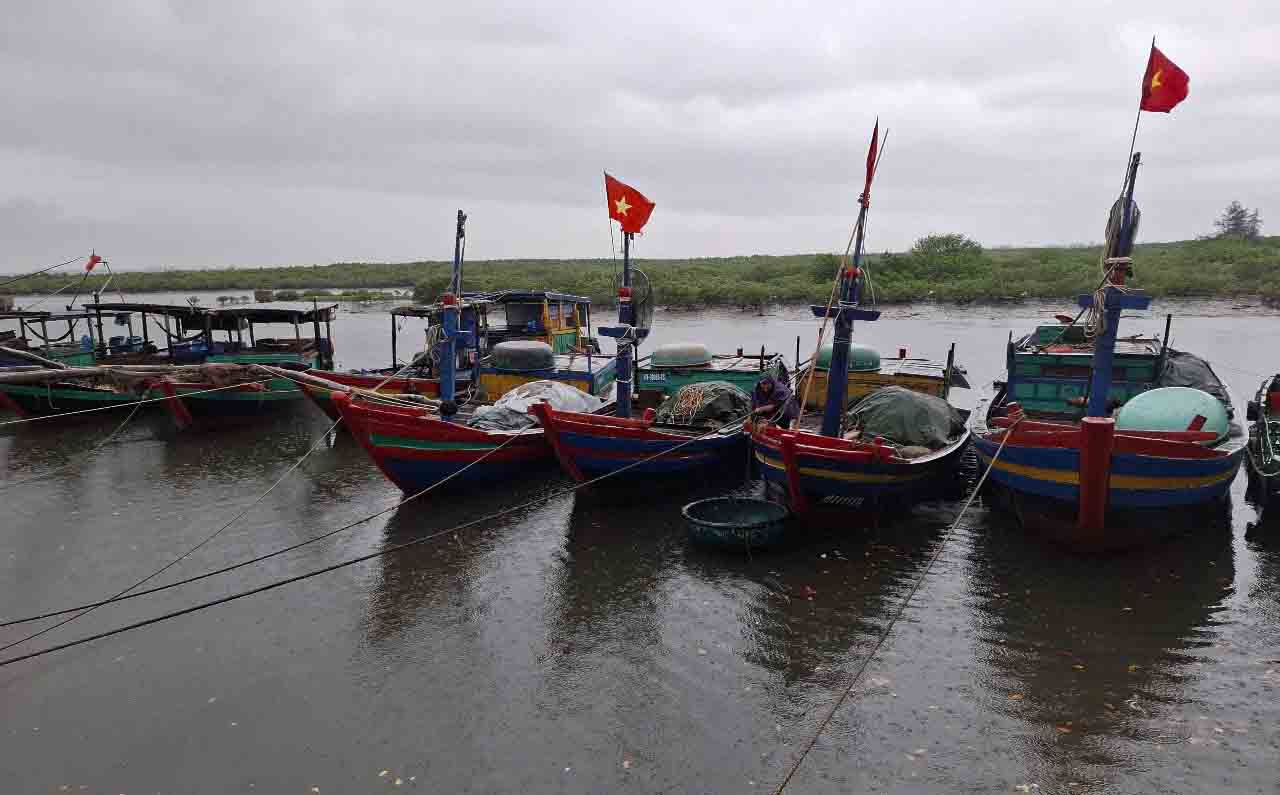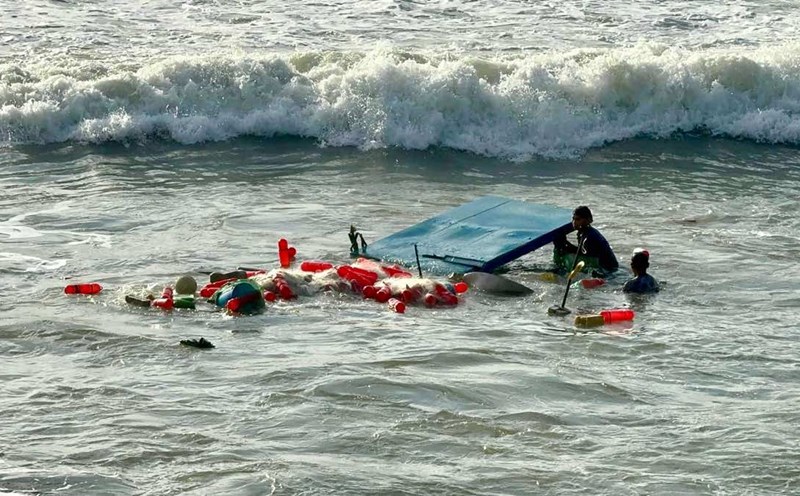On February 15, Mr. Nguyen Trong Nhat - Deputy Head of Ha Tinh Fisheries Sub-Department - said that the whole province currently has 4,103 registered fishing vessels.
Of which, the fleet operating in the lowland area (length from 12m to under 15m) has 282 ships; the fleet with a length of 15m or more operating in the offshore area has 78 ships working in fishing, boat rafting, trekking, trapping, and squid photography. This is also the fleet that contributes a large part to the seafood exploitation output of Ha Tinh province.
The remaining 3,743 fishing vessels are smaller than 12m in length, accounting for more than 81.95% of the total number of vessels, fishing for trawling and fishing in coastal areas in the province.

According to Mr. Nhat, the previous regulation on the capacity of individual vessels was based on CVs, that is, fishing vessels, although small in size, with large-capacity machines can catch in coastal areas.
However, according to current regulations, the capacity of fishing vessels must correspond to the length of the vessel. Therefore, with most of Ha Tinh's fishing vessels under 12m long, they mainly only fish in coastal areas.
"Fishermen want to build large boats but their fishing capacity is not good and resources are scarce. Building large ships offshore also requires large capital. Because if they do not make a few trips and suffer losses, it is a difficult situation, so many fishermen do not dare to take risks and invest in building large ships" - Mr. Nhat shared.
Mr. Nhat further analyzed that the Central Coast has many rains and storms, so investing in building large ships and not being able to fish for many months in bad weather is also a difficulty, causing most fishermen to only use small boats to fish near the shore.
According to the Ha Tinh Fisheries Sub-Department, currently, the capacity of the fleet and the exploitation level of Ha Tinh fishermen are still extremely limited, exploiting in the traditional way, so the exploited products with high economic value account for a small proportion.
Processing infrastructure, seafood services and ensuring safety for people and fishing vessels have not met actual requirements, the floodgates are silted up, causing difficulties for fishing vessels to enter and exit, especially during the rainy and stormy season.

The technology of processing and preserving products after exploitation has not been developed, and there is no aquatic unit market to facilitate fishermen's consumption of products. The lack of close production linkages between processing facilities and seafood exploitation fleets is a difficulty for the seafood exploitation industry in Ha Tinh province.
According to the report, the output of seafood exploitation in Ha Tinh province in January 2025 will reach about 4,207 tons, reaching 9.35% of the 2025 plan. Of which, marine exploitation reached 3,822 tons, worth VND193.78 billion; inland exploitation reached 385 tons, worth VND10.78 billion.











